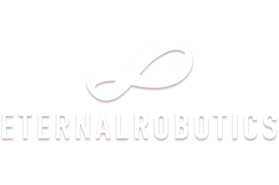Visualizing medical concepts for patients
Beyond simply conveying information, the power of visual medical communication lies in its ability to motivate and guide patients toward specific actions and better health outcomes. Building on foundational understanding, the strategic use of visual tools allows practices to enhance engagement significantly and demonstrate tangible value. It moves the interaction from passive viewing to active participation in their health journey.
Creating an effective 3D Medical Patient Education Video involves more than just illustrating concepts; it requires clear direction for the viewer. Generic instructions fall short; instead, videos should conclude with unmistakable, action-oriented calls. These prompts must resonate with the video's specific purpose and where the viewer stands in their process, ensuring a smooth next step whether seeking more details or preparing for a procedure.
Measuring the success of patient education animation means looking past simple view counts to evaluate true impact. Practitioners can assess the return on investment by comparing production costs against generated value. This involves tracking metrics that reflect increased efficiency or improved patient behavior, translating visual understanding into practical benefits for both the patient and the practice.
Refining the approach involves understanding how patients interact with content. Analyzing viewer behavior offers deep insights, revealing areas that capture interest or cause confusion. Incorporating real-world scenarios makes complex information relatable, showing how advice or treatment integrates into daily life. Adding elements that build confidence further strengthens the message, making the guidance more persuasive.
- Implement specific, actionable calls to action relevant to patient needs, such as "Prepare for Your Visit" or "Understand Your Medication Schedule."
- Track quantifiable outcomes like reduced time spent on repeated explanations during appointments or a decrease in follow-up questions about procedures.
- Utilize analytics tools to study viewing patterns, identifying segments that are frequently rewatched or skipped to pinpoint content needing refinement.
- Show how medical advice fits into everyday living and include trust-building elements like practice credentials or relevant certifications to enhance credibility.
A deliberate approach to visualizing medical concepts, focusing on guiding action, proving value, and refining content based on patient interaction, empowers individuals and streamlines care delivery.
How patients understand complex biology
Patients often grapple with intricate biological concepts and medical procedures. Understanding one's health is crucial for informed decisions and following treatment paths. Visual explanations bridge this gap, transforming complex information into digestible insights. They move beyond static diagrams, offering dynamic perspectives on internal processes previously hidden or hard to imagine.
Employing visual communication like 3d medical animation helps demystify anatomy and disease mechanisms. Analyzing how viewers interact with a 3d medical video provides valuable data. Heatmaps reveal which sections hold attention or cause confusion, allowing for targeted improvements. Showing real-world scenarios and how treatments integrate into daily life makes the information relatable. Incorporating social proof, such as patient stories or endorsements from trusted institutions, builds confidence and encourages engagement. Clear, specific calls to action guide patients on the next steps, ensuring they know how to use the information provided. Measuring the impact involves tracking metrics like reduced support inquiries or improved follow-through on recommendations. Adapting content for various platforms ensures accessibility, whether viewed quickly on social media or in detail on a patient portal. Testing different elements, from visuals to messaging, refines effectiveness and ensures the content resonates with the intended audience.
- Define clear action points to guide viewer response.
- Track video performance against defined objectives.
- Incorporate patient experiences and credible endorsements.
- Optimize presentation for diverse viewing environments.
These strategies collectively enhance how patients grasp complex health information, fostering better health outcomes.
Ensuring anatomical precision in 3d medical animation
Creating a truly impactful 3D medical patient education video requires anatomical precision as a fundamental building block. Building upon the need for clear communication that avoids assuming prior knowledge, meticulous visual accuracy empowers a deeper level of patient understanding. It provides a credible foundation, making complex biological processes, disease mechanisms, or treatment pathways visually authentic and easier to grasp. An effective anatomy animation video serves as this essential starting point, setting the stage for clear and trustworthy information delivery.
Once viewers understand the core visual information presented with precision, guiding them toward desired actions becomes the next step. Clear and specific calls to action are vital here. Instead of vague prompts, action-oriented text like "Request a Demo" or "Download the Report," relevant to their point in their journey, proves far more effective. Accurate visuals lend authority to these calls, reinforcing confidence in the information provided and the suggested next steps.
Measuring the true impact extends beyond simple view counts; it involves tracking the tangible value generated. Accurate visualizations minimize confusion, potentially leading to fewer support inquiries or reduced sales cycle length as prospects are better informed. Analyzing this contributes directly to measuring the return on investment. For patients facing tests, a clear diagnostic procedure video empowered by anatomical accuracy can significantly ease concerns and improve preparation, a measurable positive outcome for healthcare providers.
- Leveraging precise visuals allows for incorporating social proof, subtly showcasing logos of institutions or mentioning user statistics to build credibility based on trust in accurate representation.
- Analyzing viewer behavior through heatmaps or attention tracking tools provides invaluable data. This granular insight into how audiences interact with accurate anatomical depictions reveals segments that are most engaging or areas where clarity might still be improved, informing future content refinement.
- Demonstrating real-world scenarios and showing how procedures or devices integrate into relevant contexts is made believable by anatomical accuracy, increasing perceived value.
- Optimizing for different platforms means considering how the precise visuals translate and remain effective, whether on a mobile social feed needing instant clarity or a detailed product page assuming higher intent. A/B testing elements like thumbnails or call to action placement refines how this accurate content resonates.
Explaining surgical procedures clearly for patients
Guiding patients through surgical procedures visually requires more than simply illustrating steps. The most effective videos set clear objectives, empowering individuals by showing what actions to take before or after their procedure. Moving beyond passive viewing, these resources aim to instill confidence and readiness, transforming complex medical information into understandable, actionable insights for someone facing surgery.
Quantifying the value these videos provide extends past production costs. Teams assess their impact by tracking tangible benefits such as reduced patient calls to clinics asking routine questions or faster recovery times linked to better understanding of post-op care. This focus on measurable outcomes ensures resources are invested wisely in tools that genuinely improve the patient experience and clinical efficiency.
Understanding how patients interact with educational content is key to refining its effectiveness. Analyzing viewer behavior using tools like heatmaps can pinpoint exactly where sections might be confusing or where attention wanes. Identifying these moments allows for targeted improvements. When detailing internal anatomy, a medical animation video provides unparalleled clarity, while a medical device animation video precisely illustrates how complex equipment functions during the procedure, both critical elements to analyze viewer engagement with. A/B testing different openings or calls to action helps ensure the video resonates strongly.
Presenting procedural information within realistic scenarios enhances relatability, showing how understanding directly impacts a patient's journey. Including subtle indicators of credibility builds trust. Finally, tailoring the video's format and length for different platforms, recognizing someone watching on social media needs a different experience than someone on a hospital website, ensures the message reaches them effectively wherever they are seeking information, ultimately leading to a better patient understanding and preparedness.
Portraying disease progression through animation
Animating disease progression offers a powerful way to clarify unseen medical processes for patients. These visuals illustrate the step-by-step journey of a condition within the body, from its initial subtle changes to more advanced stages, making abstract biological mechanisms understandable. A medical visualization video is particularly effective for depicting these internal changes over time, showing the subtle shifts and impacts of a disease that are otherwise invisible, fostering deeper understanding.
Showing the body's response as a condition evolves makes its potential impact tangible and emphasizes the importance of timely action. Animations can effectively demonstrate how specific treatments interact with this progression, illustrating their mechanism of action at a cellular or systemic level and highlighting potential benefits in altering the disease journey. Integrating relatable, real-world patient examples further enhances the narrative, building empathy and fostering a stronger connection by showing how the condition might affect someone.
Maximizing the effectiveness of these visuals requires concluding with clear, action-oriented calls to action. Instead of generic prompts, specific CTAs like "Discuss Treatment Options with Your Doctor" or "Find a Nearby Specialist" guide patients toward necessary next steps in their health journey. Measuring video success involves implementing tracking mechanisms to monitor conversions directly linked to these action-oriented calls to action, allowing creators to gauge the real-world impact and return on investment from their educational content.
ROI evaluation connects animation investment to valuable outcomes beyond just views, such as a measurable reduction in patient confusion leading to fewer support inquiries or a faster rate of informed treatment adoption. Analyzing viewer interaction data, perhaps through heatmaps showing watch patterns, helps identify engaging segments or areas where understanding might drop, allowing for refinement of the progression narrative itself. Including subtle social proof elements enhances credibility, while continuous A/B testing of different video components, such as the opening hook or CTA placement, allows for continuous performance optimization. Tailoring video length, style, and messaging ensures suitability for various viewing platforms and audience contexts. This makes it a highly effective medical explainer video for patient comprehension and engagement across digital channels.
- Craft clear, specific calls to action guiding viewer next steps.
- Implement tracking to measure video impact on patient actions and reduced inquiries.
- Analyze viewer engagement data to refine content and identify areas for improvement.
- Continuously optimize through A/B testing and tailoring for platforms.
By vividly illustrating the disease journey through animation, creators empower patients with essential knowledge, encouraging informed decisions and fostering better health outcomes.
Illustrating patient treatment pathways visually
Visualizing patient treatment pathways effectively moves beyond simply showing medical information; it becomes about guiding the viewer through potential steps and outcomes. After understanding the condition through detailed visuals, patients and caregivers need clarity on the journey ahead. This requires strategic thinking in video creation, focusing on elements that empower viewers and provide clear next steps, making the complex process feel more manageable.
Creating engaging patient education requires measuring what works. Beyond initial views, tracking video impact involves analyzing viewer behavior. Understanding which parts resonate most, or where viewers drop off, provides valuable insights. This data helps refine content, ensuring it holds attention and effectively communicates vital information about the treatment path.
To maximize video impact, incorporate elements that build confidence and provide direction. Using real-world scenarios helps viewers see themselves navigating the pathway. Clear, specific calls to action at the video's conclusion tell viewers exactly what they can do next, whether it is scheduling a consultation or accessing more resources, making the pathway actionable.
- Analyze viewer interaction data like heatmaps and attention tracking to optimize pacing and content.
- Employ A/B testing on different video elements, such as thumbnails or calls to action, to identify what drives desired patient engagement.
- Tailor video content and length for different viewing platforms, recognizing varying patient intent and access environments.
- While a molecular animation video might detail drug action and a procedure animation video illustrate surgical steps, ensure these are part of a cohesive narrative showing the entire pathway.
Showing cellular mechanisms in health videos
Animated visualizations offer a powerful lens into the body's most fundamental activities, showing cellular mechanisms with intricate detail. These visuals connect complex microscopic events to the larger health conditions individuals experience. By illustrating cellular dysfunction and how disease progresses at this foundational level, these videos build understanding, vividly depicting the mechanism of action for various treatments and showing precisely how therapies work within cells to restore health.
Beyond simply explaining biology, these videos guide viewers toward tangible next steps. Integrating clear, context-specific calls to action ensures individuals know what actions to consider in their health journey. Presenting cellular processes within relatable, real-world scenarios helps anchor the information, demonstrating how treatments targeting these cellular issues integrate into overall patient care plans. Sharing stories referencing positive outcomes linked to understanding these mechanisms builds credibility and reinforces value.
Measuring impact extends beyond view counts; tracking conversions on targeted CTAs provides tangible evidence of effectiveness and helps assess return on investment against production costs. Analyzing viewer behavior data reveals which parts of complex cellular explanations resonate or confuse, enabling optimization. A/B testing different visual approaches for cellular components further refines how information is presented for maximum comprehension. Optimizing these cellular mechanism videos for accessibility across diverse platforms ensures they reach individuals seeking health insights. A well-crafted surgical animation video might incorporate these cellular details to explain why a procedure addresses a specific biological issue. Similarly, a comprehensive surgical procedure video could use cellular animation segments to enhance understanding of the underlying pathology being corrected.
- Ensure calls to action are specific and guide the viewer clearly.
- Track key metrics to demonstrate video impact and value.
- Use audience interaction data to refine and improve cellular explanations.
Ultimately, empowering patients with deeper insights into cellular health fosters engagement and informed decision-making.
Building patient confidence with visual aids
Empowering patients often begins with clear understanding. Visual aids, particularly 3D medical animations, play a crucial role in demystifying complex health information. Beyond creating accurate visuals, strategically optimizing these videos significantly builds patient confidence and encourages informed decisions.
Effective videos guide viewers toward the next step. Including clear calls to action at the conclusion provides direction. Instead of vague suggestions, specific prompts aligned with patient needs prove far more effective. Think "Request Your Free Information Packet" or "Speak With a Specialist" tailored to where someone is in their health journey. Measuring video impact involves tracking production expense against value generated. This value appears as increased patient inquiries, reduced time explaining common concepts, or fewer support questions after viewing a relevant treatment process video.
Showing procedures or conditions within real-world contexts makes information resonate deeply. When a biotech animation demonstrates how a medication works, showing its effect within a relatable bodily system increases understanding and belief in the therapy's potential. Incorporating social proof, like brief mentions of patient testimonials or relevant organizational endorsements, quickly builds trust and credibility.
Analyzing viewer behavior offers invaluable insight. Tools like heatmaps reveal exactly which parts of a video hold attention or cause viewers to disengage. This data acts as powerful feedback, identifying confusing segments or areas lacking impact. Refining videos based on these insights ensures content addresses patient concerns effectively. Furthermore, A/B testing different elements, such as the initial frames or the phrasing of a call to action, reveals what truly connects with the intended audience, leading to more impactful communication and greater patient empowerment. Optimizing for mobile viewing environments ensures accessibility for everyone seeking health information on their devices.
- Well-defined calls to action direct patient engagement effectively.
- Tracking video cost versus patient value demonstrates tangible return.
- Real-world applications make complex medical information relatable.
- Analyzing viewer interaction pinpoints areas for video improvement.
Using animation to support informed medical consent
Utilizing animation fundamentally shifts how patients approach informed consent. It transforms complex medical details into understandable visual narratives, empowering individuals to grasp procedures, risks, and alternatives far more effectively than traditional text-heavy documents alone. This visual clarity fosters a deeper understanding vital for making confident healthcare decisions. Tailoring content ensures diverse patient populations, regardless of literacy level or language, can access and process crucial information.
Guiding patients toward the next steps requires deliberate strategies. Incorporating clear and specific calls to action within videos directs viewers precisely what to do after watching, such as reviewing the consent form digitally or submitting questions to their care team. Success measurement moves beyond simple views; tracking metrics like reduced patient queries and improved comprehension scores demonstrates the animation's tangible impact and return on investment.
Continuous refinement of animated content is achievable through data analysis. Reviewing viewer analytics identifies segments where attention drops or confusion may arise, providing actionable insights for optimization. Building trust is paramount; incorporating social proof, such as anonymized patient outcomes or relevant organizational endorsements, enhances credibility. A/B testing different video elements, from visuals to calls to action, allows teams to refine messaging for maximum effectiveness. Optimizing videos for various platforms, especially mobile, ensures essential information is accessible wherever patients prefer to learn. For those considering participation, a clinical trial animation can clarify the research journey, while a comprehensive device mechanism video can detail the function of implanted technology, further supporting informed choices.
- Specific calls to action enhance patient engagement.
- Data analytics guide content refinement for better understanding.
- Social proof builds essential credibility with viewers.
- Optimizing for platforms ensures wide accessibility.
Leveraging animation thoughtfully improves the consent process, leading to more informed patients and better healthcare experiences.
Making medical education accessible for all patients
Making medical education truly accessible requires going beyond creating visually clear content. It involves strategically deploying and optimizing these powerful tools to ensure patients not only understand complex information but are also guided towards better health outcomes. Creators must think about the viewer journey post-watching, considering how the video prompts action and contributes to overall educational goals. Effective deployment turns passive viewing into active engagement.
To measure the true impact and refine their approach, teams must look at more than just view counts. Tracking the return on investment of a health education video involves analyzing how it contributes to tangible results. This could mean observing decreases in support inquiries or gauging improvements in patient adherence rates, directly linking the video's cost to the value it generates in terms of informed patients and more efficient healthcare processes. Understanding intricate biological pathways or the precise function of a medication, often shown in a Mechanism of Action video, requires clear visual communication and confirmation of its comprehension.
Optimizing these resources for diverse audiences and platforms is paramount. What works on a patient portal might differ significantly from content shared on social media. Adapting the length, style, and calls to action ensures the message resonates wherever patients access the information. By focusing on these practical aspects, medical educators can significantly enhance the reach and effectiveness of their 3D animated materials, fostering greater understanding and empowering patients on their health journeys.
- Using specific calls to action instead of generic prompts directs viewers toward desired next steps, whether accessing more resources or contacting a healthcare provider. These should align precisely with the video's purpose and where the viewer is in their educational path.
- Integrating real-world scenarios makes the information relatable, demonstrating how concepts apply directly to a patient's life or condition and increasing the perceived value of the knowledge shared.
- Analyzing viewer engagement through analytics reveals which sections hold attention and which might be confusing, providing data needed for future content refinement. Incorporating social proof, like patient testimonials or usage statistics, can build trust quickly.
- Employing A/B testing on elements such as titles, introductory sequences, or call-to-action wording allows creators to gather data on what resonates most effectively with the target audience, driving continuous improvement in educational delivery.
These strategic considerations elevate 3D medical videos from simple informational tools to dynamic components of comprehensive patient education strategies, ensuring accessibility and maximizing positive impact.




































